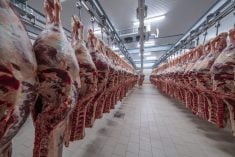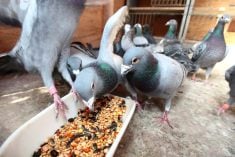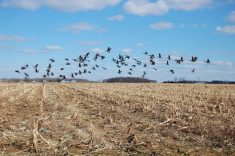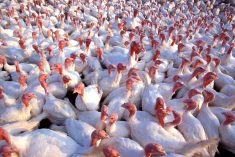Infectious bronchitis virus (IBV) continues to find ways to keep itself relevant to poultry farmers, researchers and veterinarians across North America — much to their dismay.
Why it matters: Despite lots of research and efforts to find ways to manage it, the virus continues to mutate and show up in flocks with different symptoms in different areas of the continent. It is the top respiratory virus issue in commercial poultry production.
Brian Jordan, a researcher in the departments of poultry science and population health at the University of Georgia, spends a lot of time trying to help poultry production systems keep IBV under control. He also tracks the virus’s spread around the continent.
Read Also
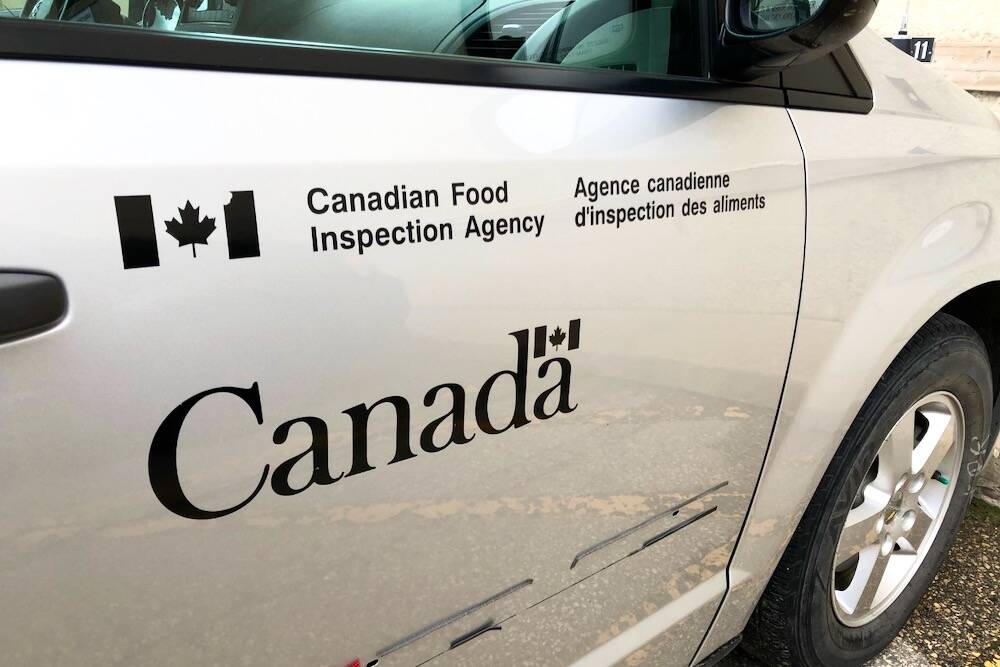
B.C. ostriches culled, CFIA confirms
Ostriches on an embattled Edgewood, B.C. farm have been culled after a prolonged legal battle, the Canadian Food Inspection Agency has confirmed.
Jordan provided an overview of the IBV outbreak in Canada in 2016 and 2017 to a recent Poultry Industry Council meeting in Stratford.
In 2014 there were no isolates of a new variant of the disease, DelMarVA (DMV) 1639, found in Canada, but by 2016, 11 per cent of IBV cases were the DMV 1639 variant and by 2017, it was 46 per cent of the cases.
The virus first spread in Huron County and Prince Edward County, according to an Ontario Animal Health Network report. By the end of 2016 it had spread to most of southern Ontario.
In the U.S., DMV 1639 first showed up in 2013 and mostly infected broiler barns. Broilers have shown up with respiratory problems, the most common way in which the disease manifests itself. The disease causes cilia in the birds’ respiratory systems not to beat, resulting in a buildup of mucus, as mucus and the contaminants it carries can’t be moved out of the trachea. That means more secondary infections as other pathogens can move through the mucus layer into the cellular layer.
Airsacculitis is the most common secondary infection.
In Canada, however, Jordan said the virus acted quite differently, affecting layers, causing a two to 20 per cent drop in egg production, depending on the farm’s vaccination program.
Some of the flocks can recover, but others remain at the 20 per cent loss level in production.
“If they get it in the pullet house, those birds never reach peak production. They always stay behind the curve,” he said.
The challenge with IBV in layer barns was unprecedented, prompting Egg Farmers of Ontario to launch an emergency program to help producers whose production fell below 80 per cent of expected egg lay.
False layer syndrome is one of the most common results of the virus in layers — and that means more cystic ovaducts.
The IBV strain also can affect kidneys and the result is birds clustered around waterers and floors slick with manure.
IBV can be spread by:
- aerosol (through the air);
- contaminated feed and water; and
- contaminated equipment and clothing.
Jordan said the virus moves quicker in colder, damper winters, when poultry barns are closed up to preserve heat.
Researchers such as Jordan are trying to learn from the disease — but the more they find out, the more the virus moves.
“What’s interesting is the evolution of the virus since it was first identified in 2011 at the University of Delaware,” he said.
As with most diseases, biosecurity is key in breaking the cycle, but some systems with eight barns in close proximity might have four affected and four not, he said. There were cases in which half of barns, separated by a wall, would be affected, and the other half not.
“It was very random and sporadic,” he said.
They figured out the use of a vaccine was actually masking how far the virus had spread — again emphasizing the great power of vaccines in disease prevention, but also their occasional imprecision and challenge.
Companies and poultry farmers continue to chase the virus with the vaccine. Even autogenous vaccines — made from material infected with a local strain — haven’t worked as well.
“I don’t think the autogenous vaccine is a perfect match,” said Jordan.
The movement of autogenous vaccines around the country to areas that don’t have diseases “has definitely contributed more to the problem with bronchitis in the U.S. than the solution,” he said.
DMV 1639 has now moved to Arkansas from its original base in the northeast of the continent, likely through a company that has poultry farms in both the affected area and in Arkansas.
The DMV 1639 strain can now be found in all types of poultry in Canada, said Jordan, although its prevalence has now waned.
— John Greig is the editor of Farmtario at Ailsa Craig, Ont. Follow him at @jgreig on Twitter.






